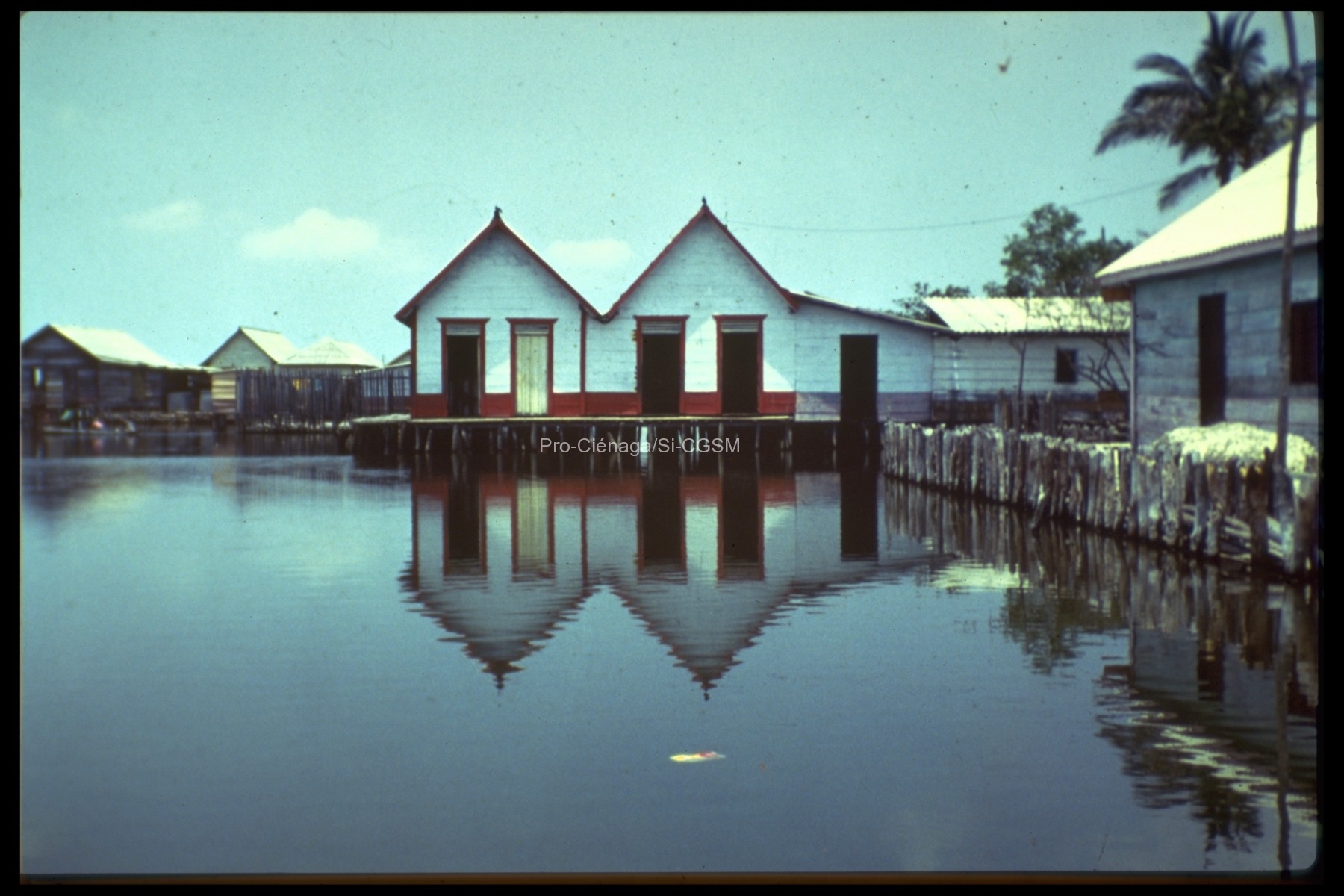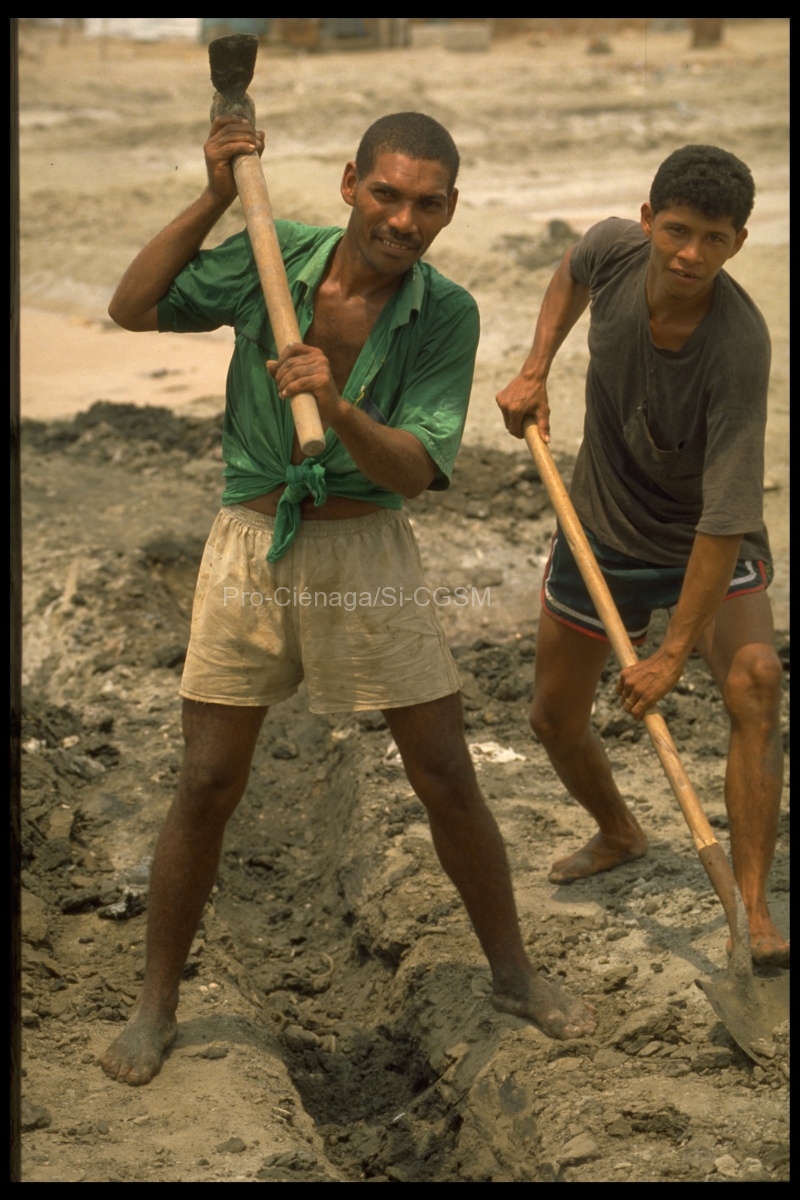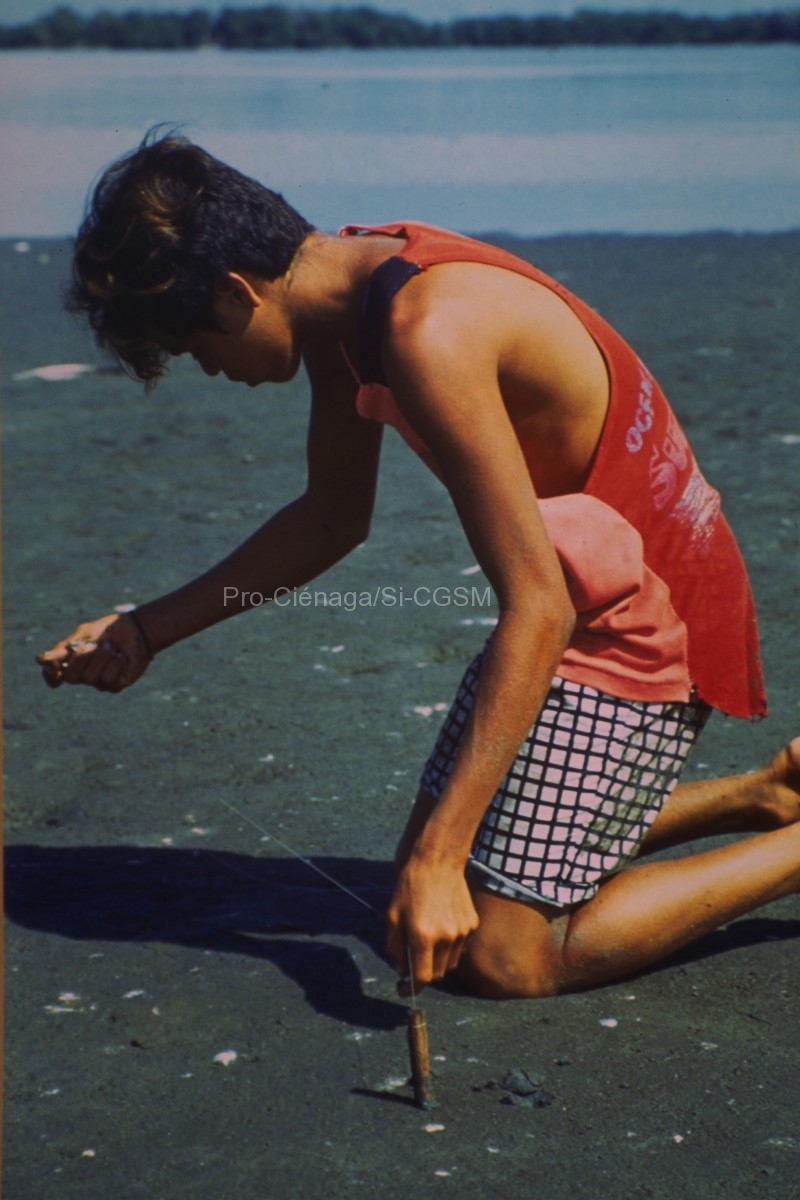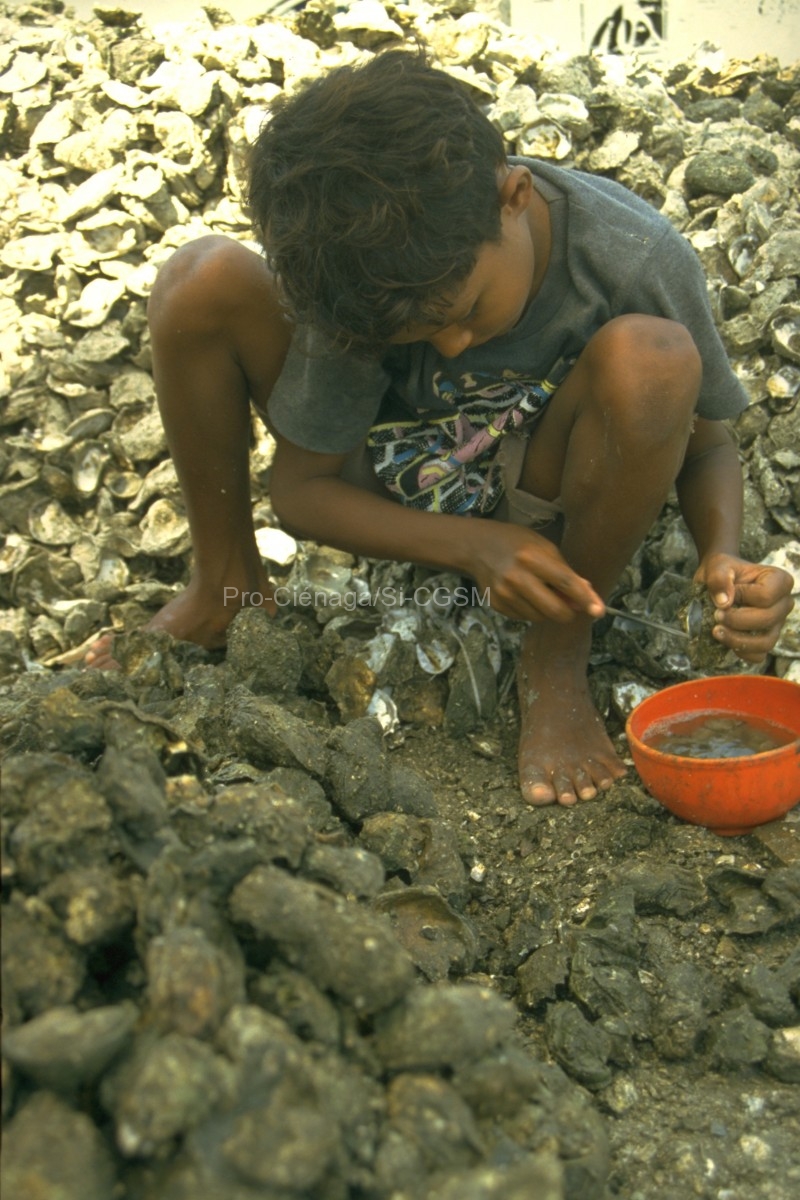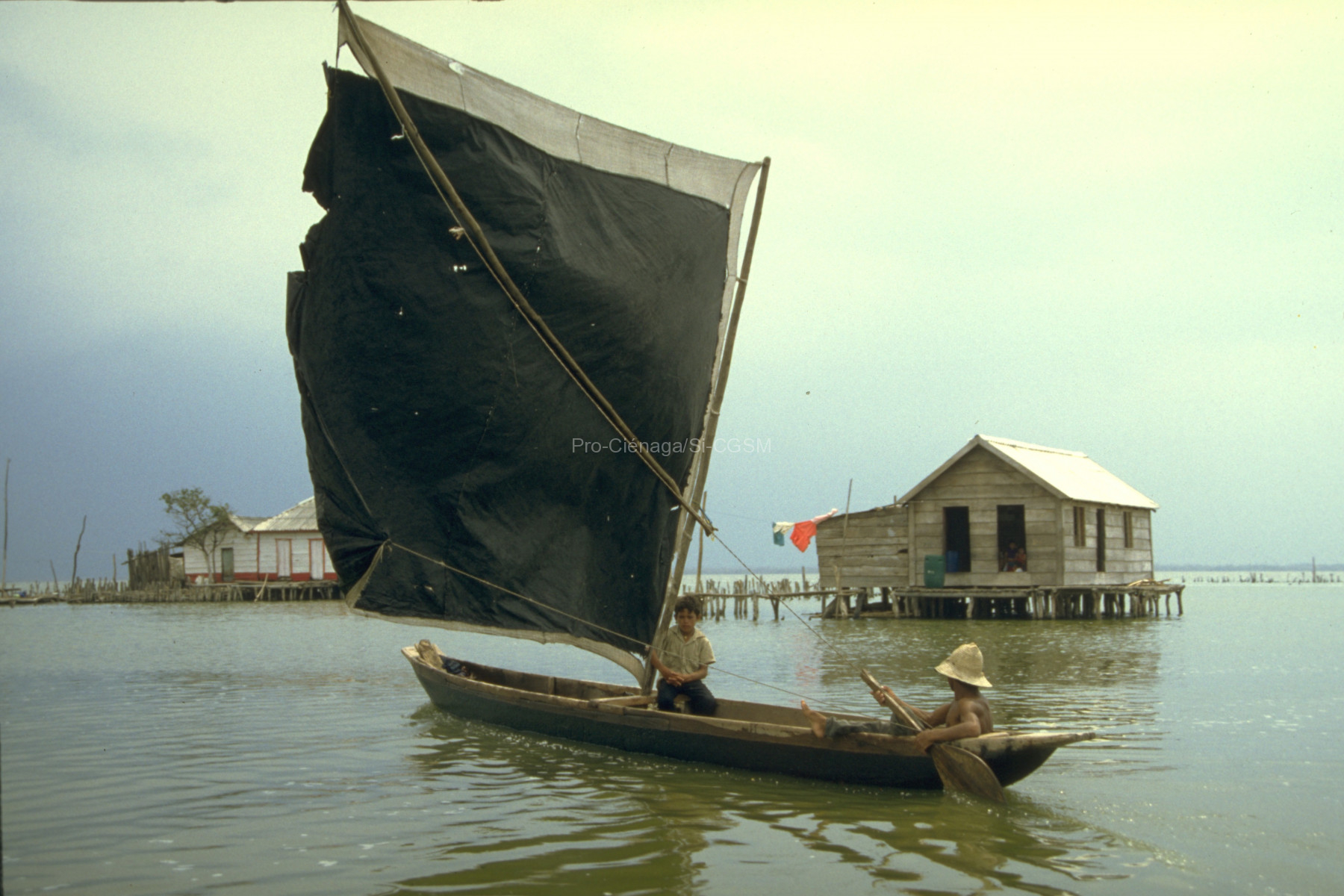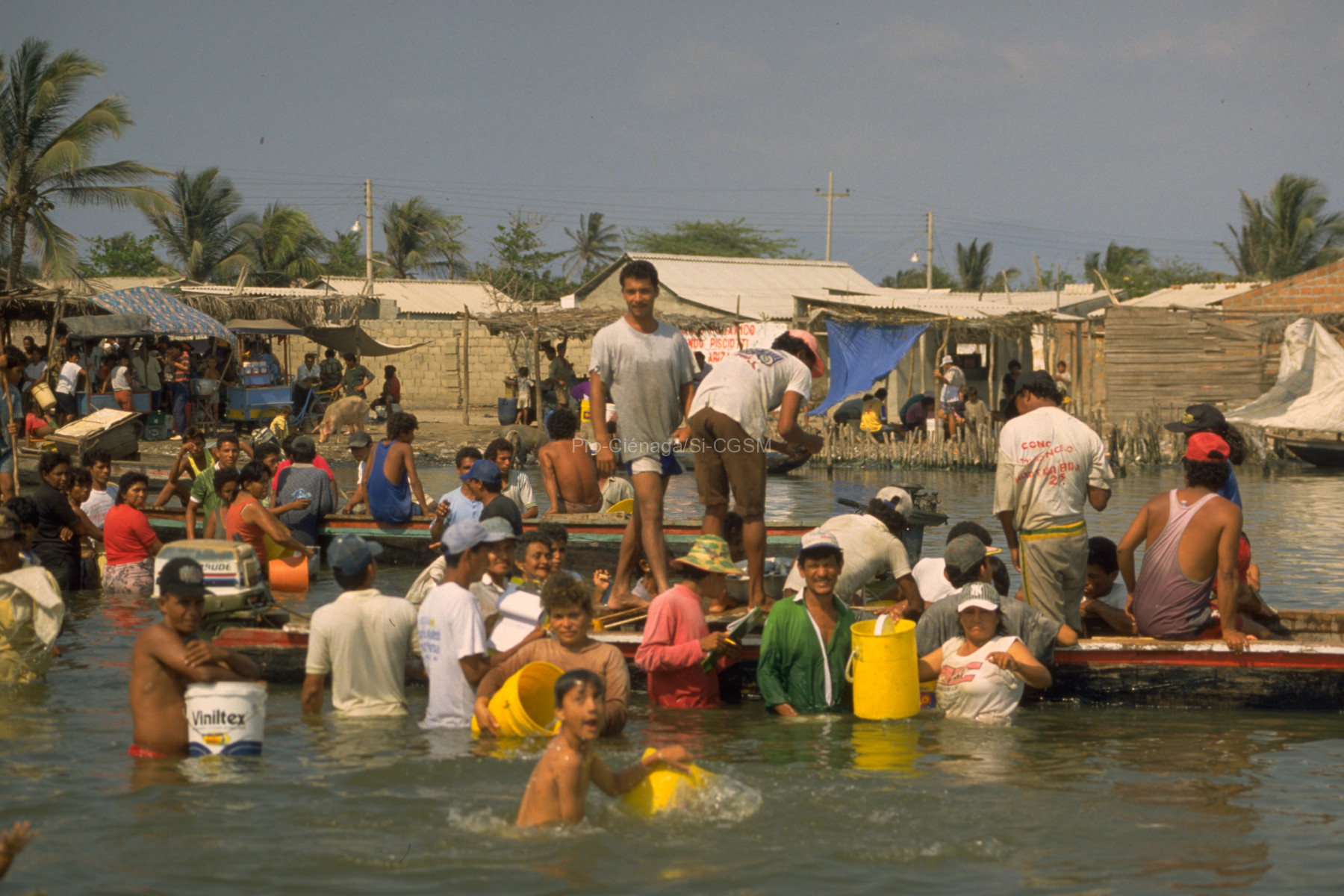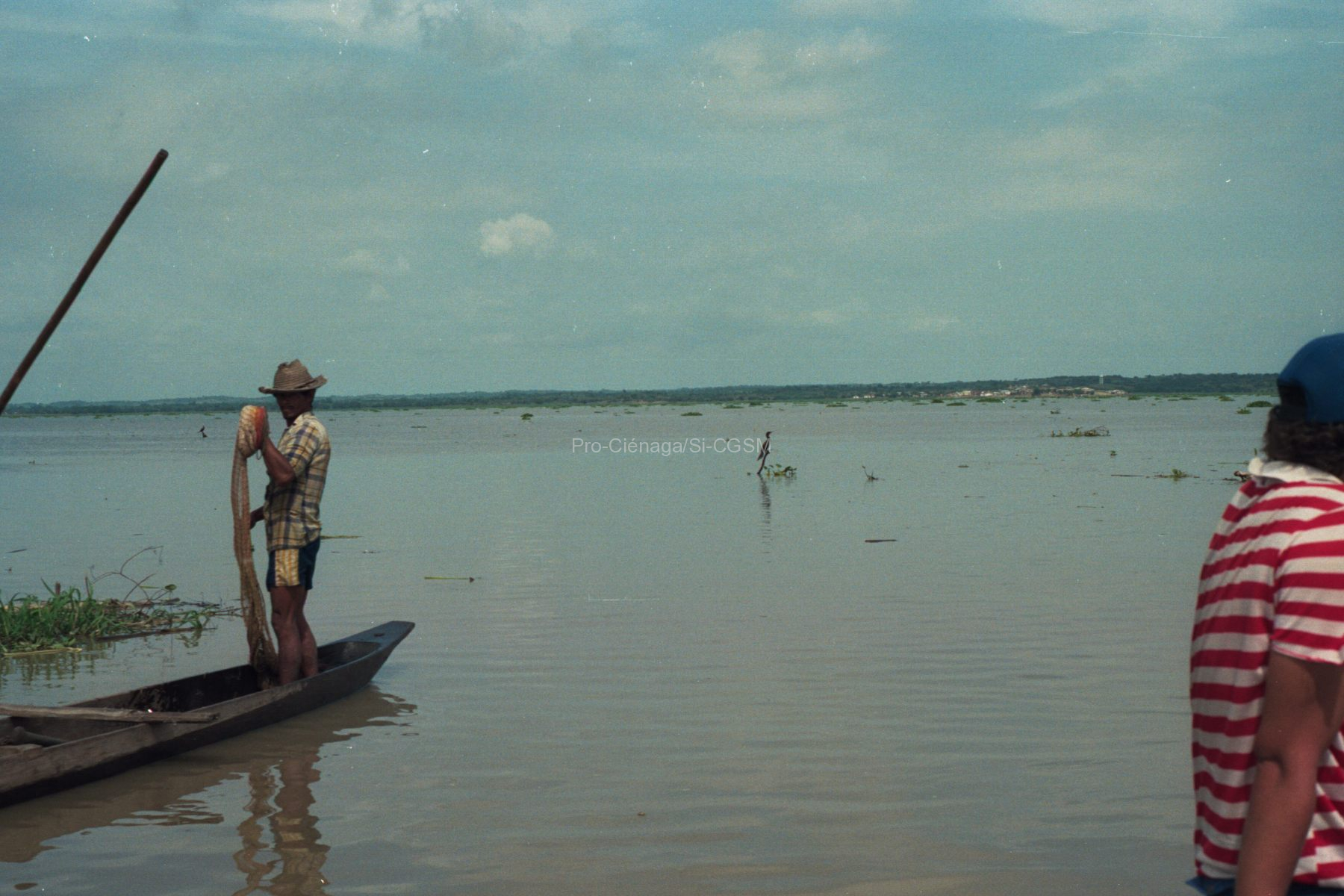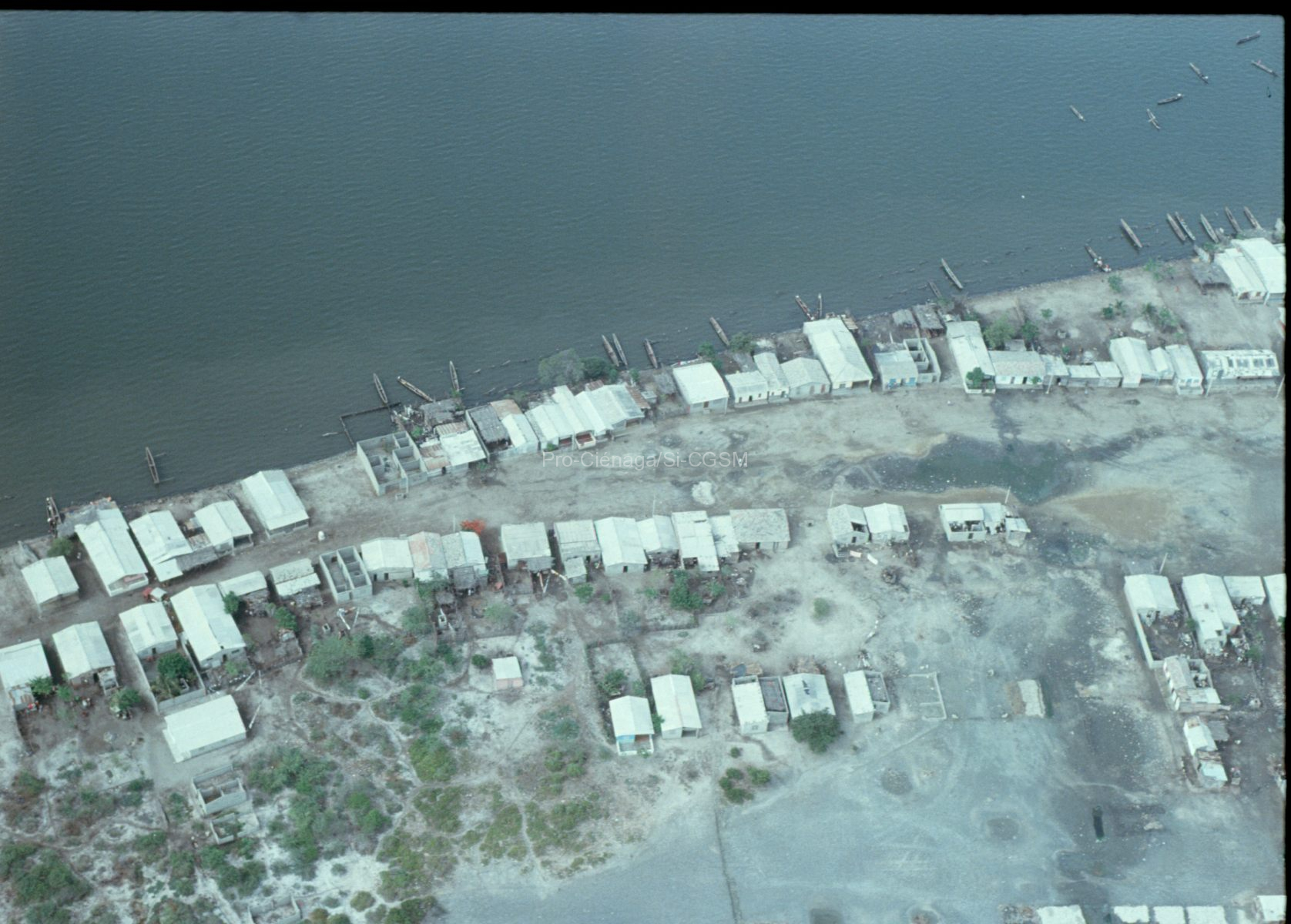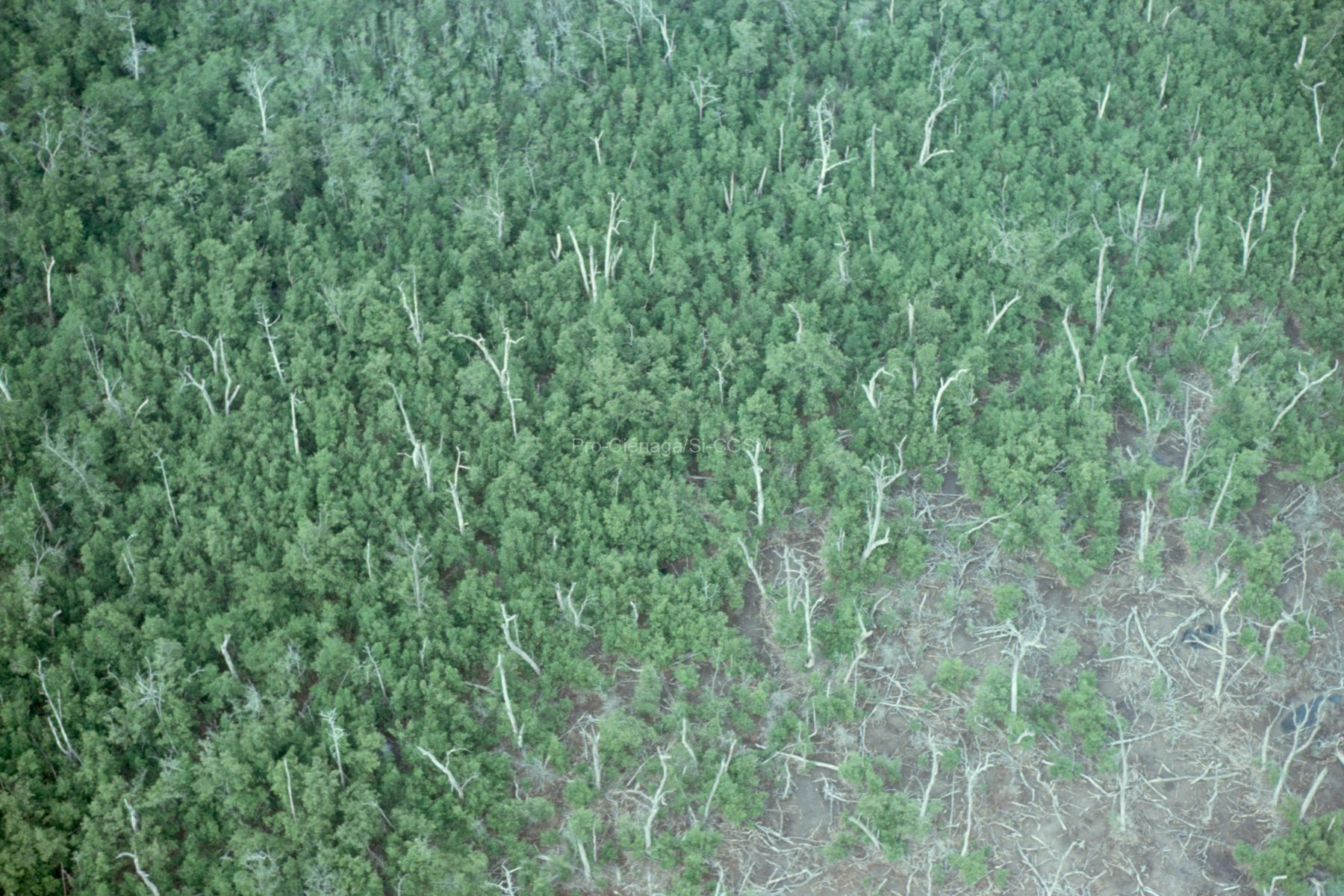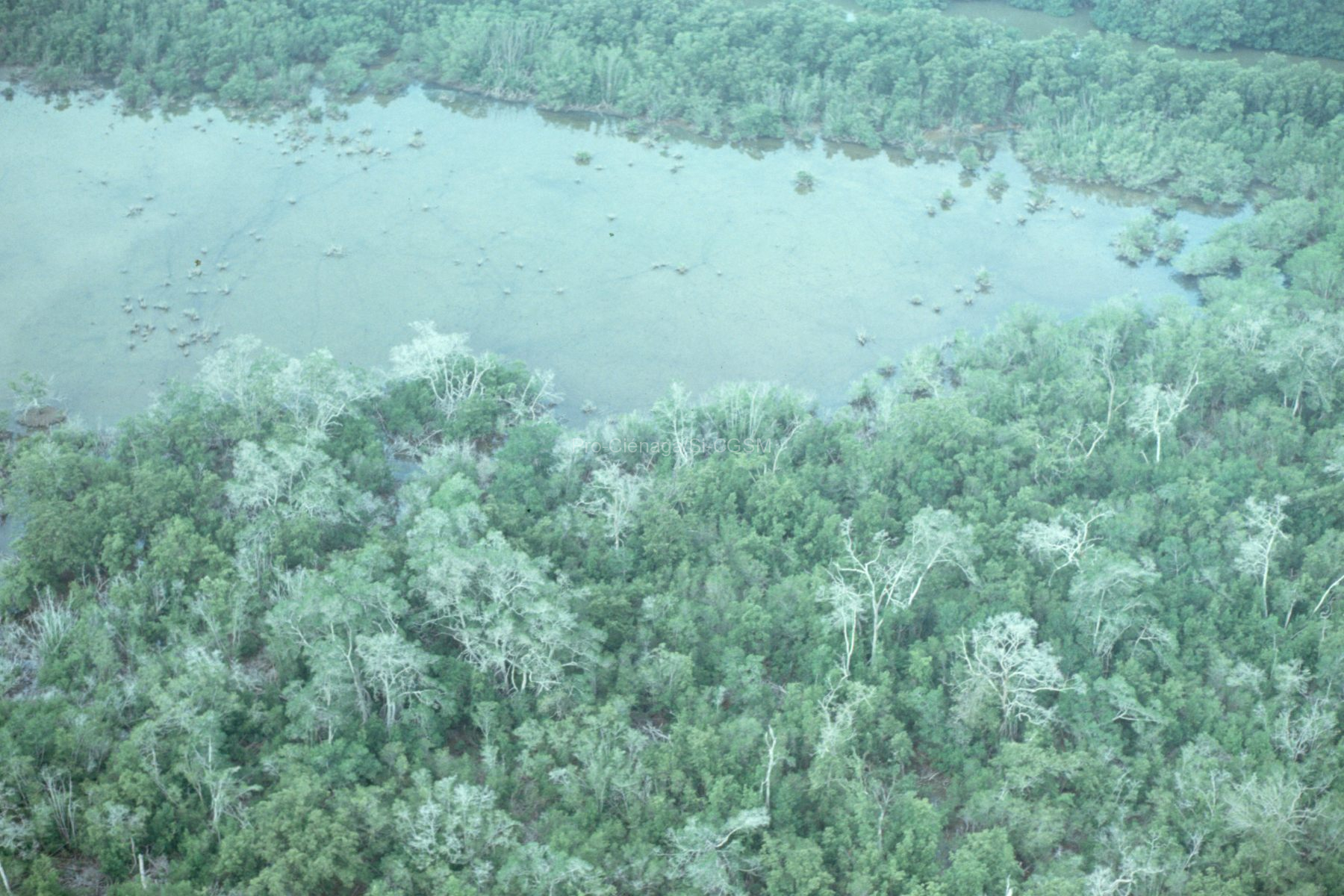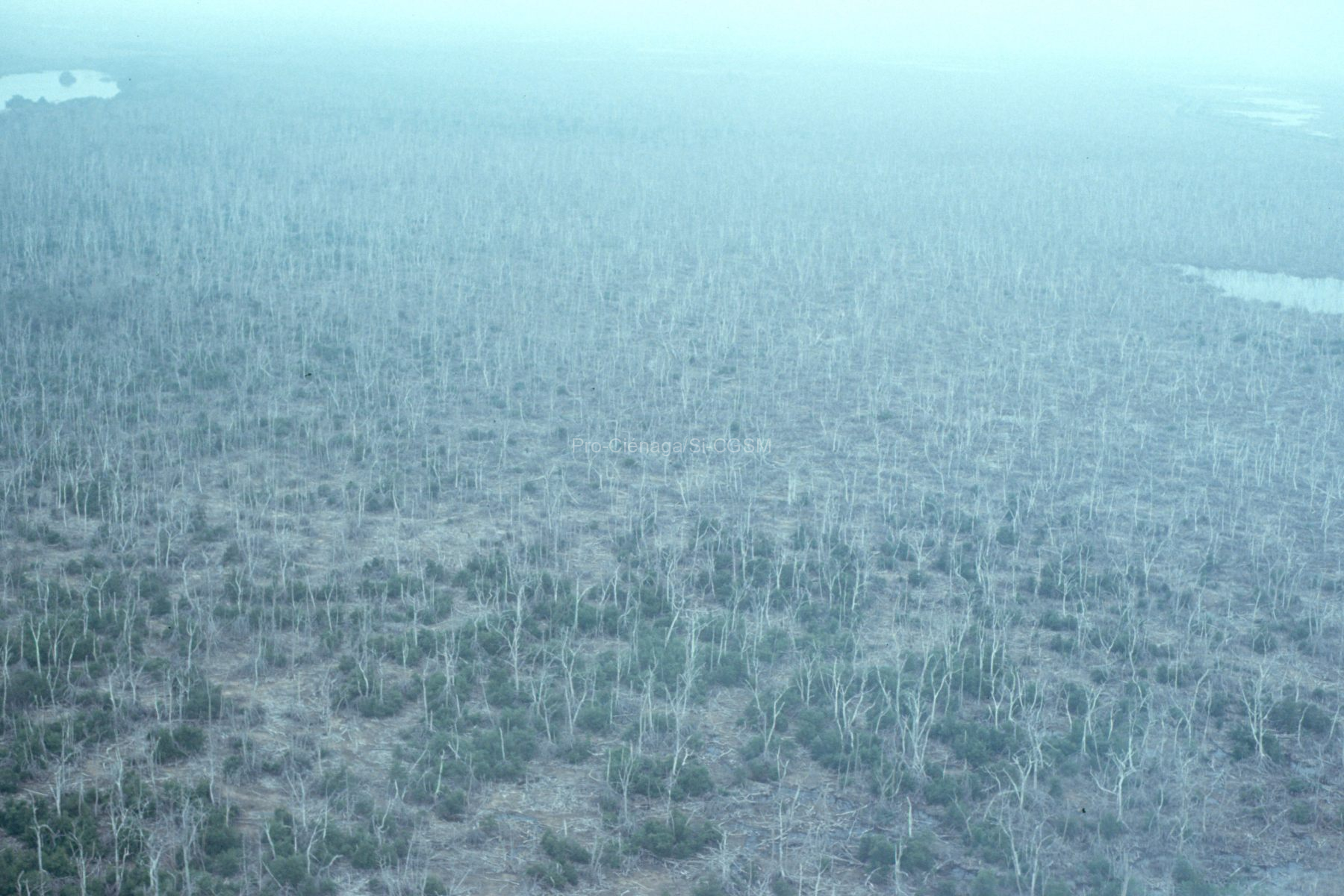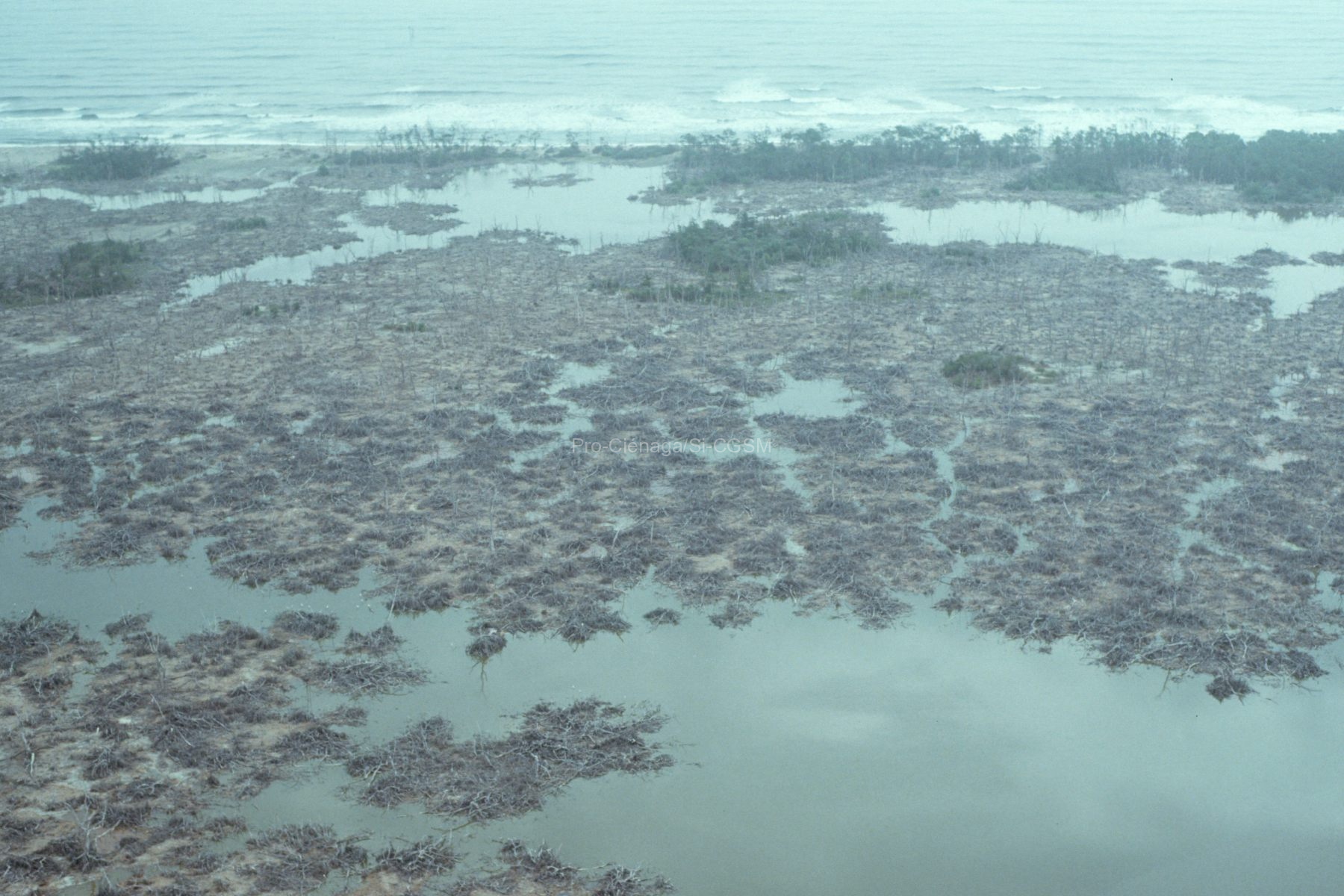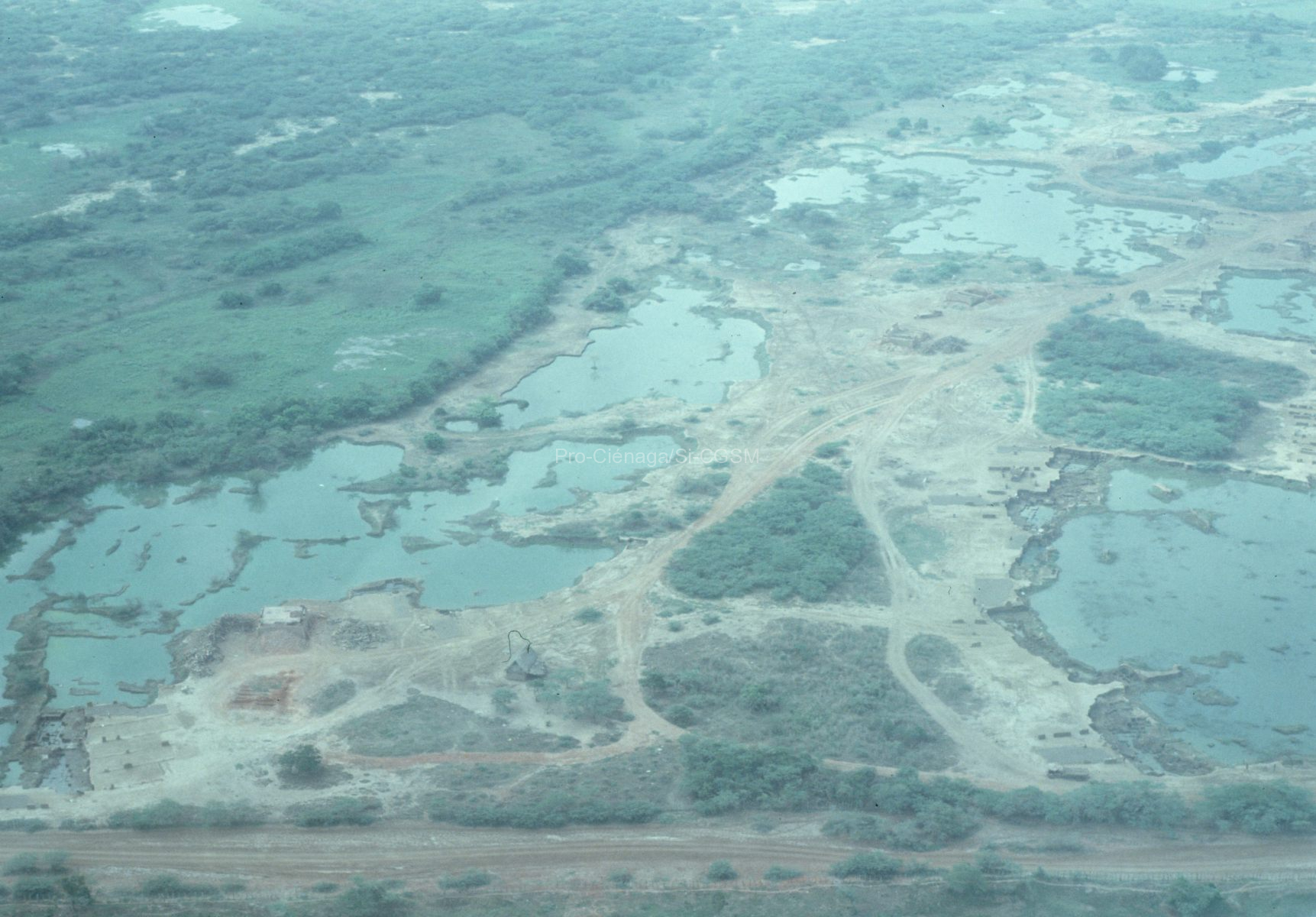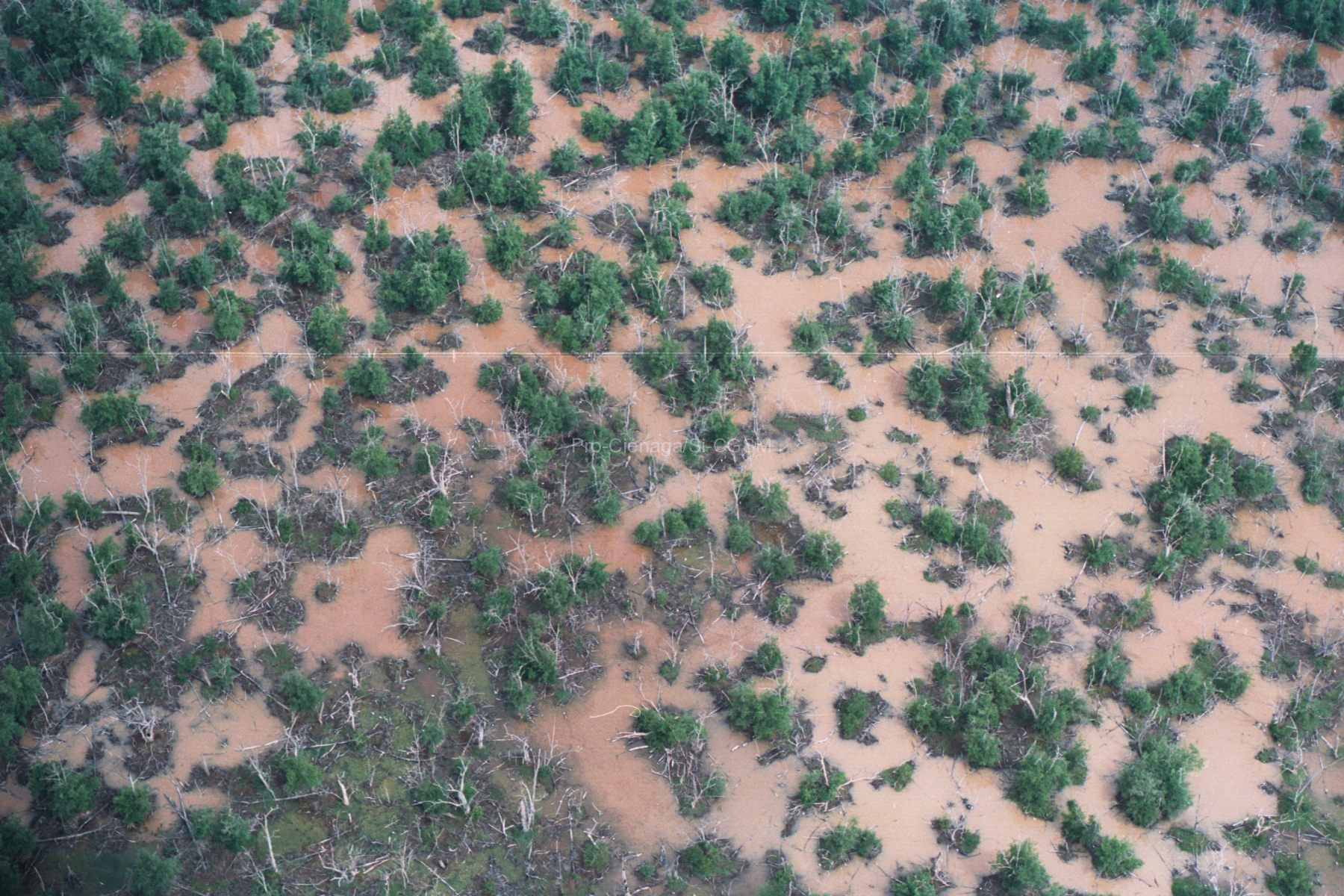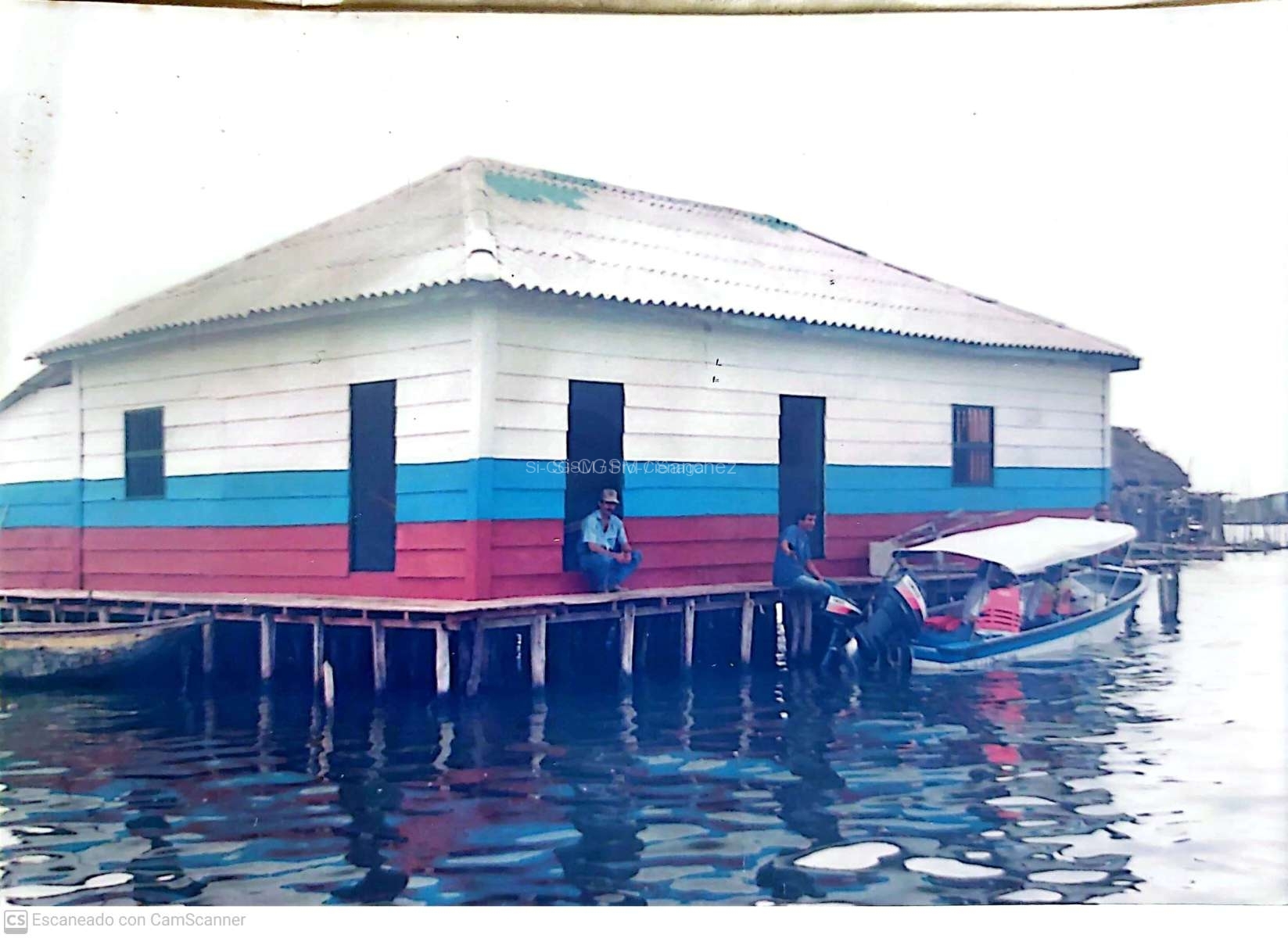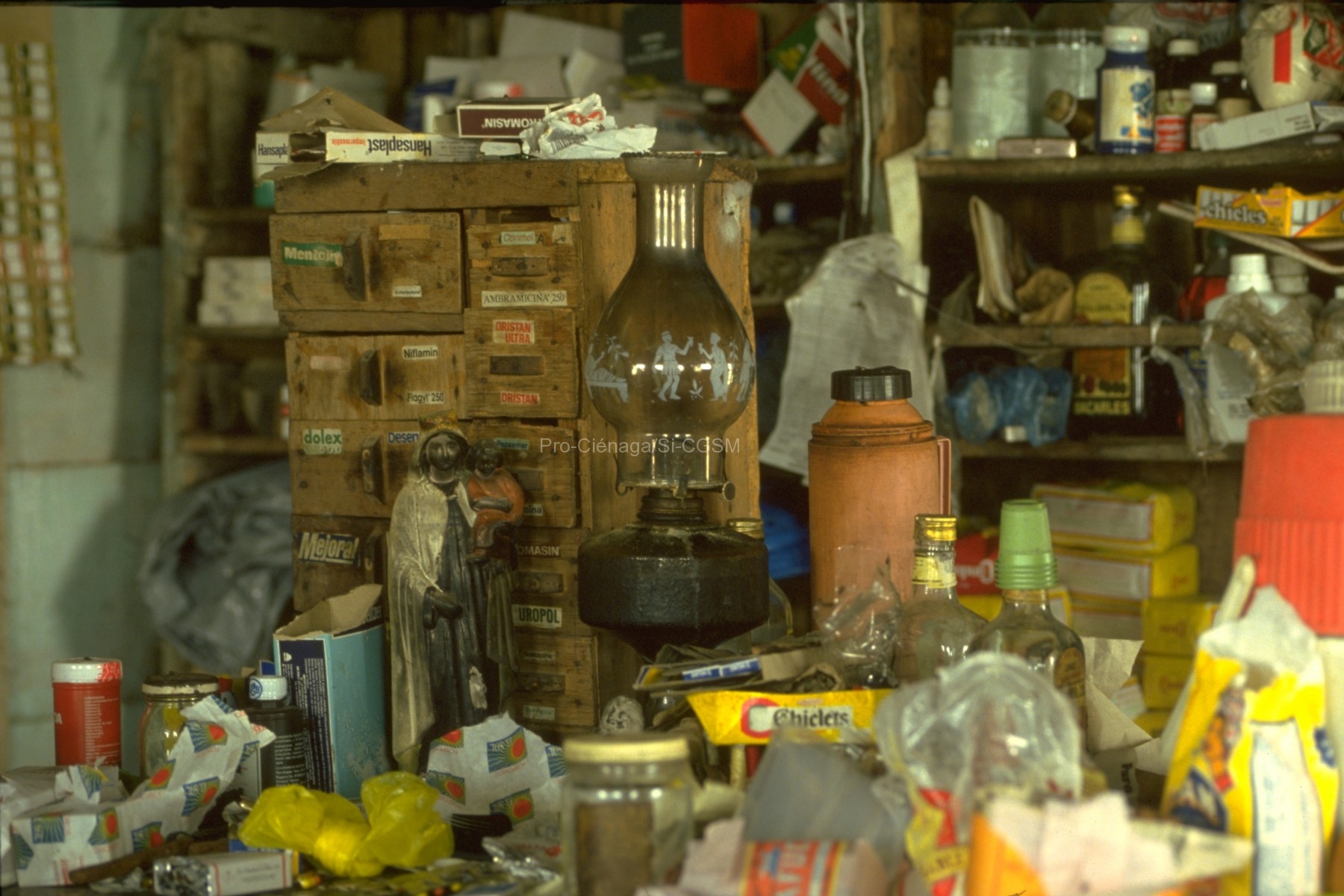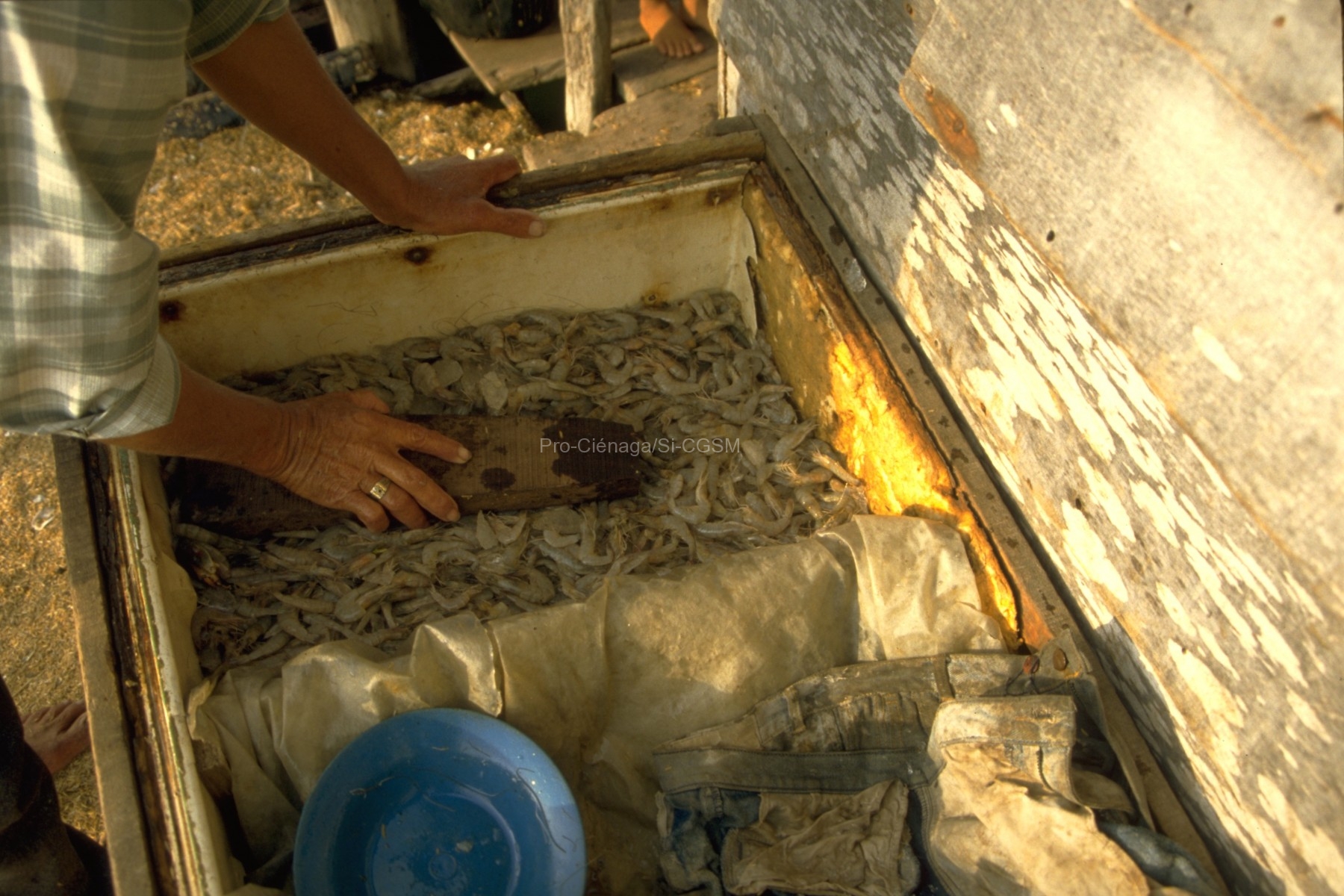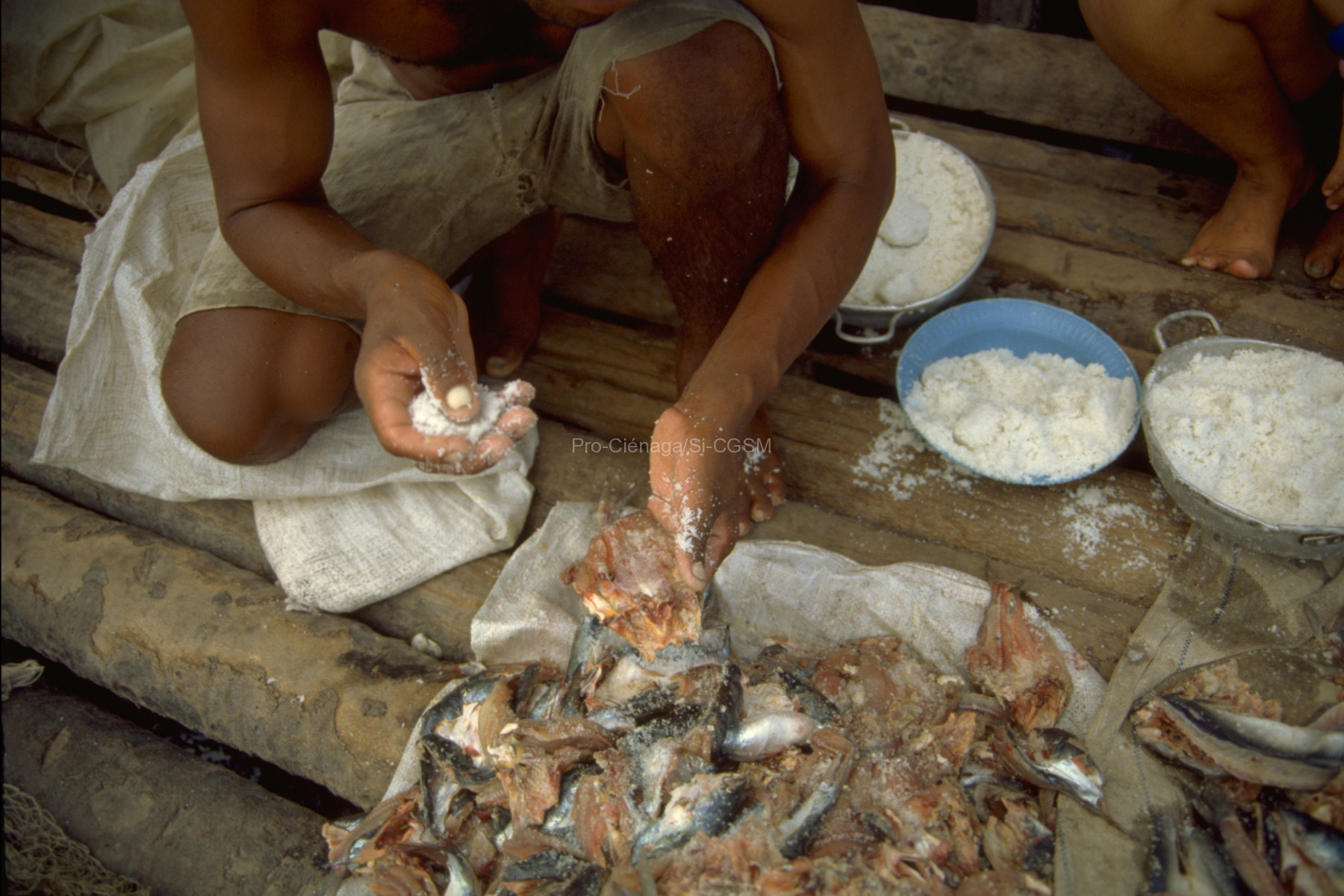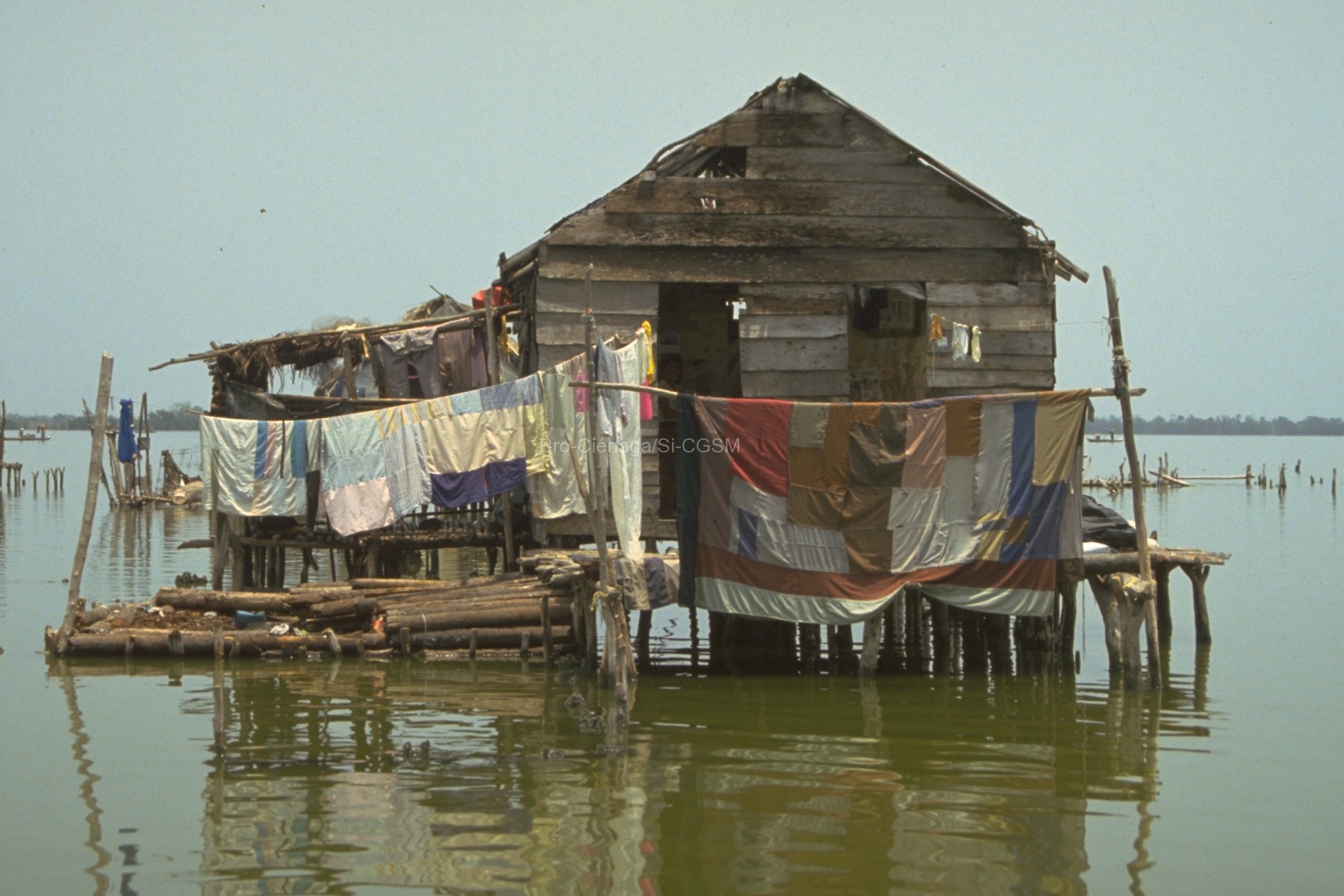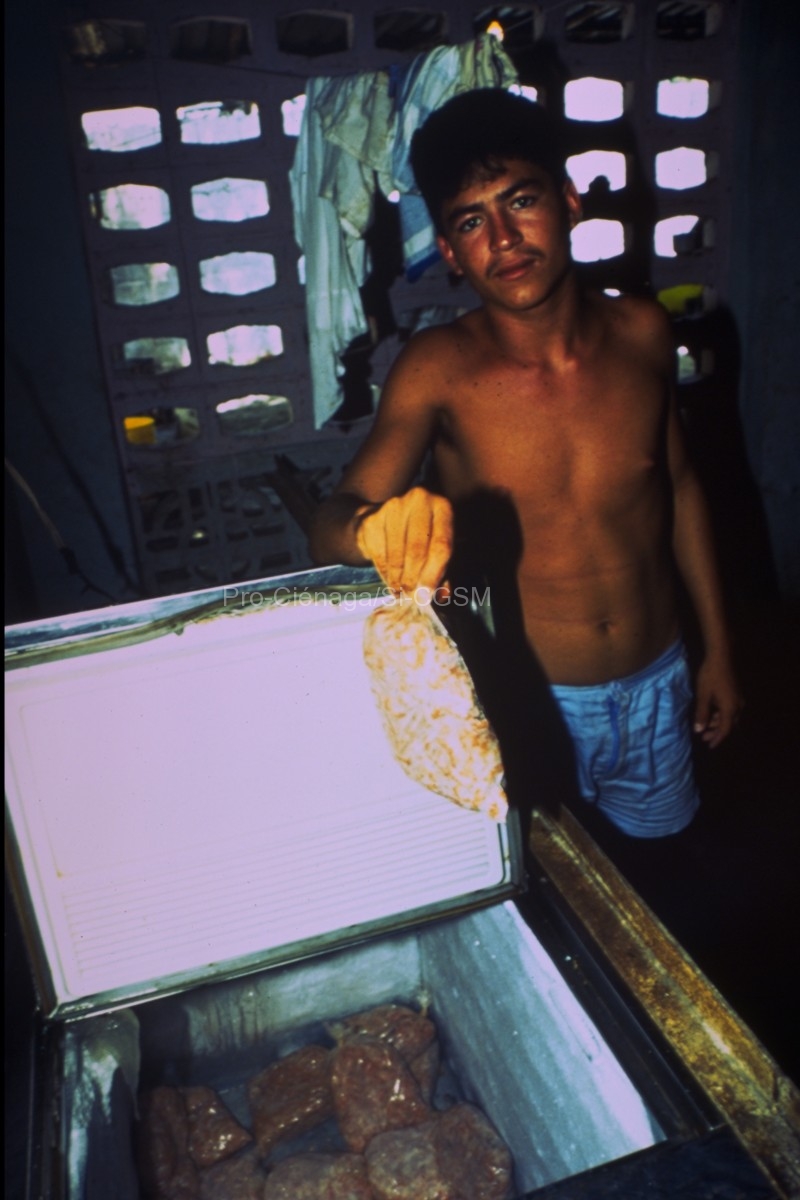Over a period of 44 years, we observed the vegetation changes in the western part of the lagoon system of the Ciénaga Grande de Santa Marta, which is situated on the Caribbean coast of Colombia and is separated from the sea by a sandy barrier. Since the construction of the Barranquilla-Ciénaga Road between 1956 and 1960, the lagoon system has been exposed to different interventions in its hydrological make-up, as well as changes to the vegetation. During the time of our investigations, four periods with different plant cover were distinguished. In 1965, the road was bordered by dense mangrove forests. The low surface water salinity and the presence of freshwater plants indicated the influence of the Magdalena River. At the beginning of the seventies, the second period was marked by a decrease in the freshwater in-flow from the river, which led to an increase in salinity and a gradual decay of vegetation. In 1988, the areas formerly covered by mangroves had converted into salt flats. The third period began with the reconstruction of several channels (1995―1998) which renewed the freshwater in-flow from the river to the lagoons. The subsequent vegetation development was characterized by the establishment of Typha domingensis Pers. In 1999, a year with an unusually high amount of rainfall, this species covered most of the former mangrove area in the western part of the lagoon system. The very low surface water salinity favored its spread. The last period began in 2001/2002, when growth conditions for T. domingensis became unfavorable due to an increase in salinity. Instead, conditions for mangrove regeneration improved. This process was slower than expected and is still ongoing. The striking vegetation changes indicate the sensitivity of the coastal lagoon system to hydrological variability.
Se supone que está relacionado a Röderstein, M. (2000).

